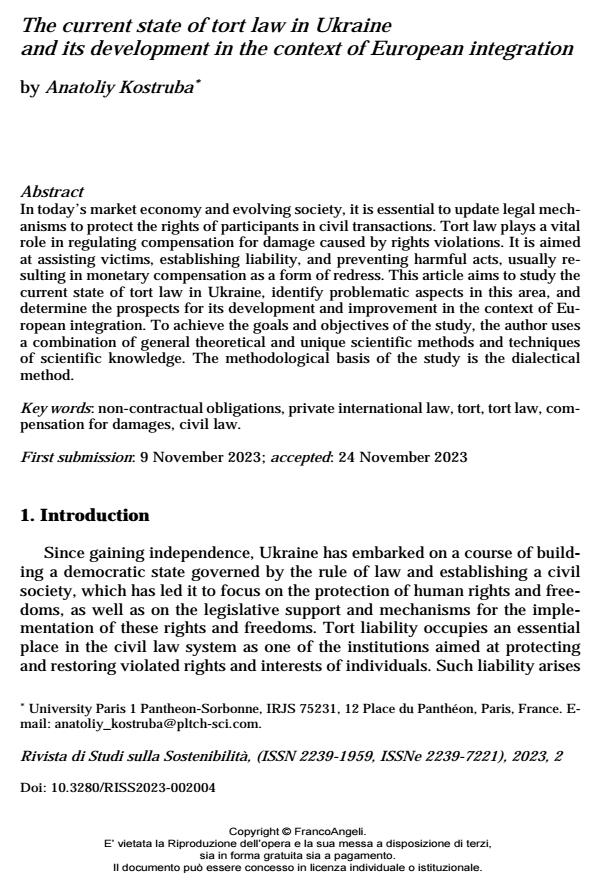The current state of tort law in Ukraine and its development in the context of European integration
Journal title RIVISTA DI STUDI SULLA SOSTENIBILITA'
Author/s Anatoliy Kostruba
Publishing Year 2024 Issue 2023/2
Language English Pages 17 P. 47-63 File size 154 KB
DOI 10.3280/RISS2023-002004
DOI is like a bar code for intellectual property: to have more infomation
click here
Below, you can see the article first page
If you want to buy this article in PDF format, you can do it, following the instructions to buy download credits

FrancoAngeli is member of Publishers International Linking Association, Inc (PILA), a not-for-profit association which run the CrossRef service enabling links to and from online scholarly content.
In today’s market economy and evolving society, it is essential to update legal mechanisms to protect the rights of participants in civil transactions. Tort law plays a vital role in regulating compensation for damage caused by rights violations. It is aimed at assisting victims, establishing liability, and preventing harmful acts, usually resulting in monetary compensation as a form of redress. This article aims to study the current state of tort law in Ukraine, identify problematic aspects in this area, and determine the prospects for its development and improvement in the context of European integration. To achieve the goals and objectives of the study, the author uses a combination of general theoretical and unique scientific methods and techniques of scientific knowledge. The methodological basis of the study is the dialectical method.
Keywords: non-contractual obligations, private international law, tort, tort law, compensation for damages, civil law.
Anatoliy Kostruba, The current state of tort law in Ukraine and its development in the context of European integration in "RIVISTA DI STUDI SULLA SOSTENIBILITA'" 2/2023, pp 47-63, DOI: 10.3280/RISS2023-002004